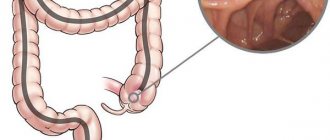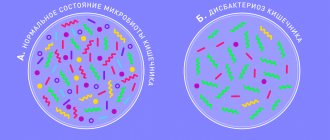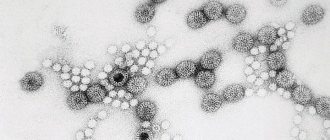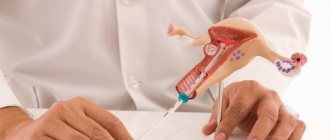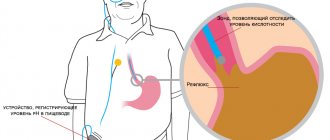HOW TO DETERMINE THE PRESENCE OF LACTOSE, FRUCTOSE AND SIBO INTOLERANCE
The most accurate results are obtained with a hydrogen breath test.
The test is carried out as follows:
The patient drinks a small amount of a special solution on an empty stomach, which after a certain time enters the small intestine. Before and after taking the liquid, the concentration of hydrogen in the air exhaled by the patient is measured. If the hydrogen concentration rises to a certain level after drinking the liquid, this indicates a disease or intolerance. Hydrogen is formed in the human body if carbohydrates are partially or not absorbed at all. In this case, carbohydrates move to the large intestine and are broken down by certain bacteria in it, which produces hydrogen. It enters the lungs through the bloodstream in a dissolved form and is exhaled by the patient.
The test is performed after an overnight fast (on an empty stomach). Measurements are taken before administration and at 30 minute intervals after, for 3 hours. The duration of the test to diagnose SIBO is 2 hours.
The technology for conducting breath tests does not allow performing several tests at the same time, because For each test, a specific test solution is required. If the conditions for preparing for the tests are not met, the examination results will be unreliable.
Bloating: causes
A lot of gas is produced when eating certain foods.
- Gas is produced during fermentation. This fermentation is caused by the consumption of kvass, beer, and yeast. Black bread also causes fermentation.
- A lot of gases are formed when eating cabbage, legumes (peas, beans), and carbonated drinks.
- If a person has lactase deficiency, he does not digest milk sugar well. In this case, when drinking milk, a lot of gases are formed in the intestines.
- Overeating and indigestion will also cause flatulence.
Increased gas formation also occurs in pathological conditions.
- Intestinal dysbiosis - a violation of the normal ratio of bacteria in the large intestine, excessive bacterial growth of microflora in the small intestine;
- Intestinal infections;
- Parasites;
- Diseases of the liver, pancreas, inflammation of the intestines (colitis)
PREPARATION FOR THE HYDROGEN BREATH TEST
- The test is performed on an empty stomach
- 4 weeks before the test, DO NOT take: antibiotics, bismuth preparations (Denol, Devismuth), probiotics (Enterol, Linex, etc.),
- do not undergo colonoscopy, irrigoscopy, enterography or take drugs to cleanse the intestines (Fortrans, Moviprep, etc.)
Bloating: symptoms
When bloated, a person feels heaviness and a feeling of fullness. He may be bothered by hiccups, belching, and heartburn. Severe bloating is accompanied by intestinal colic - cramping pain in the abdomen. Pain occurs when the intestinal loops are overfilled with gases.
Examinations that are recommended for bloating:
- Ultrasound of the abdominal cavity to exclude diseases of the pancreas, liver, and gall bladder.
- Take biochemical blood tests
- Do a hydrogen breath test for bacterial overgrowth syndrome (SIBO), fructose, lactose, and sorbitol intolerance.
- If necessary, as prescribed by a doctor, undergo a fibrocolonoscopy to identify intestinal diseases.
HOW TO PASS THE HYDROGEN BREATH TEST AT RKMC
To complete the study, you must register for the study.
- Call the Contact Center to schedule a breath test
- At the reception desk, enter into an agreement for the provision of paid services.
- Pay the bill at the RCMC cash desk or through ERIP
- Come to the study at the appointed time. The examination is carried out at a strictly scheduled time. Please do not be late and make payments on time.
The study is carried out in the gastroenterology office of the outpatient consultation department using a Lacto FAN2 analyzer (Germany).
The conclusion based on the results of the study is issued by a gastroenterologist of the highest qualification category Lyutikova O.V.
Registration for the study is carried out by phone. Contact center or at an appointment with a gastroenterologist.
Indications
Method shown:
For patients with diseases of the digestive system:
- chronic gastritis and functional dyspepsia
- dysfunction of the gallbladder and biliary tract
- intestinal diverticulosis
- chronic pancreatitis (including with symptoms of exocrine pancreatic insufficiency)
- cholelithiasis
- cirrhosis of the liver
- diabetes
- functional constipation
- irritable bowel syndrome
- lactase deficiency (including adult hypolactasia)
- fructose intolerance
A hydrogen breath test should be performed if symptoms such as :
- flatulence or bloating
- bowel dysfunction (looseness or constipation)
- bitterness and unpleasant taste in the mouth
In the following cases:
- with long-term use of drugs that suppress the production of hydrochloric acid in the stomach (the so-called group of proton pump inhibitors: omeprazole, rabeprazole, pantoprazole, esomeprazole, lansoprazole, etc.)
- after operations on the stomach and intestines.
Test procedure
The duration of the study is 2-3 hours. Exhaled air is taken using several types of devices: a Haldane-Priestley tube, a two-bag system, a fork-shaped device. The type of the preferred means for collection is not important. The information content depends more on the model of the gas analyzer and compliance with the preparation rules.
Order of conduct:
- Exhale air into the device. The first maneuver is a control one, it is carried out before taking carbohydrates. It is necessary to inhale as much air as possible, hold your breath for 15 seconds, then exhale slowly into the intake system.
- Accept the proposed solution. Depending on the indications, syrups based on lactose, fructose, and sorbitol are used.
- Repeat the breathing maneuver from point No. 1. It is performed every 15 minutes after consuming the solution.
Services
The hydrogen breath test is a method for diagnosing intestinal diseases, intolerance to certain substances in food (fructose, lactose, glucose, etc.), food allergies. The test is based on determining the concentration of hydrogen in exhaled air and is carried out using a portable Gastro+Gastrolyzer using a load - a test substance (lactose).
The air exhaled by humans contains more than 2000 substances. The lungs emit not only components of the air we breathe (nitrogen, oxygen, carbon dioxide, etc.), but also gases that are metabolic products of human cells and microorganisms. One of these gases is hydrogen, a waste product of intestinal bacteria. Between digestive processes in a healthy person, there is no hydrogen in the exhaled air. When certain enzymes are deficient in the gastrointestinal tract, carbohydrates are not digested in the small intestine and cause the growth of anaerobic bacteria in the colon, called bacterial overgrowth. Anaerobic bacteria produce hydrogen in significant concentrations; it passes through the intestinal walls into the circulatory system and, along with the blood, enters the lungs.
Measuring the hydrogen concentration in exhaled air allows us to estimate the number of anaerobic bacteria in the gastrointestinal tract and their metabolic activity. The time during which the hydrogen concentration increases during the test indicates the section of the intestine in which fermentation processes take place.
HYDROGEN BREATH TEST IS PRESCRIBED FOR A COMPLEX OF SYMPTOMS
- bitterness, unpleasant taste in the mouth, heartburn, belching (after eating)
- bloating, flatulence, gas formation (regardless of meals)
- aching or cramping, sharp pain in the abdomen (due to eating/prolonged fasting)
- chronic constipation or tendency to diarrhea
- creatorium (smelly stool due to impaired protein digestion)
If these symptoms appear regularly and in combination, your gastroenterologist may suggest taking a hydrogen breath test. The combination of such symptoms is typical for patients with bacterial overgrowth syndrome.
DISEASES AND CONDITIONS FOR WHICH THE HYDROGEN BREATH TEST IS CARRIED OUT
- irritable bowel syndrome, spastic colitis
- chronic gastritis and functional dyspepsia
- dysfunction of the gallbladder and biliary tract
- intestinal diverticulosis
- chronic pancreatitis
- cholelithiasis
- steatoria (fat in stool, determined by stool analysis)
- cirrhosis of the liver
- diabetes
- intolerance to certain foods (lactose, milk, dairy products, chocolate, confectionery)
- food allergy
PREPARATION FOR THE TEST
- 4 weeks before the study, endoscopy of the stomach, colonoscopy of the intestines, and x-rays of the gastrointestinal tract cannot be performed
- stop taking antibiotics for 4 weeks
- within a week, stop taking probiotics, prebiotics, proton pump inhibitors, hydrogen blockers, laxatives and fixatives, dietary supplements containing fructose, lactose and dietary fiber
- Follow the diet recommended by your doctor for 3 days. It is advisable not to consume grains and cereals, milk and dairy products, fruits, vegetables, and nuts. legumes, sweeteners, ketchup, honey, mustard, eggs. It is recommended to eat chicken, turkey, fish, steamed rice, eggs
- per day, strictly exclude onions, garlic, cabbage, pickled and canned legumes, juices from the diet
- Do not eat 14 hours before the test. The last meal before the test should be light and not contain dietary fiber or fruit. You can drink still water.
On the day of the test - do not smoke, do not use chewing gum - do not take vitamins - use toothpaste without sorbitol when brushing your teeth. Do not use denture adhesive.
The test is carried out in the morning, after an overnight fast.
HOW IS THE HYDROGEN BREATH TEST PERFORMED?
The breath test is carried out in several stages. First, the basal (initial) level of hydrogen concentration in the patient’s exhaled air is measured: the patient takes a long breath and exhales into a special analyzer. The patient then ingests 25 g of lactose (test substance) dissolved in 250 ml of warm water. For 2 hours, every 15-30 minutes, samples of exhaled air are recorded and symptoms that may appear during the test are recorded - bloating, increased peristalsis, diarrhea, abdominal pain, nausea, heartburn, belching, and extraintestinal symptoms - weakness, drowsiness, lung coughing, dry mouth, dizziness, headache, skin manifestations (itching, redness), lacrimation, etc.
The duration of the test is 150 minutes. Take a book, mobile phone, tablet with you so you don't get bored during the test.
Based on the test results, analysis of symptoms, and the time of their manifestation, the gastroenterologist issues a conclusion. If violations of food absorption and/or bacterial overgrowth syndrome are detected, the doctor may order additional examinations and, based on the results, prescribe a course of treatment - antibiotics, diet or individual diet, enzyme therapy.
Hydrogen breath tests are available by appointment.
Decoding test results – 1 day (on weekdays). If taken on the weekend, the test will be read on Monday. Test results are sent by email. patient's email are displayed in the Personal Account on the website. You can get a transcript of the results from the registry administrators with your passport.
Recovery after coronavirus
How is rehabilitation going?
The need for rehabilitation after suffering even a mild form of coronavirus was discussed in the first months of the pandemic. Restorative procedures help the patient return to a state of health as close as possible to pre-Covid. Complex measures are aimed both at restoring the full functioning of the lungs and respiratory function, strengthening the immune system, and at restoring digestion, eliminating chronic fatigue syndrome, and improving the psychological state.
In Russia, programs for rehabilitation from COVID-19 on the basis of treatment and preventive institutions are becoming widespread. This can be either outpatient recovery or day hospitals in polyclinics and private medical centers, as well as sanatoriums. Taking into account the fact that such programs take two weeks or more, the patient, taking into account his capabilities, can choose for himself a more optimal option between undergoing rehabilitation in a sanatorium or a clinic.
There is no unique technology
A universal rehabilitation program after suffering from COVID-19 has not yet been presented. In addition, the approach to each patient is always individual. The most important thing is to try to restore the lost functions of vital organs as much as possible.
General points of rehabilitation are:
- Diet taking into account the patient's gastrointestinal dysfunction. Therapeutic nutrition is aimed at restoring digestion, as well as replenishing macro- and micronutrient deficiencies.
- Medicines. The doctor prescribes the necessary medications and determines the duration of treatment.
- Physiotherapy. Light exercise and moderate physical activity help strengthen muscles, improve respiratory function and blood circulation.
- Breathing exercises aimed at restoring lung function.
- A complete sleep schedule. Asthenic syndrome is a common consequence of coronavirus that is difficult to eliminate. You need to sleep at least 8–9 hours a day. In addition, healthy sleep helps in restoring the patient's psychological state.
Diet therapy
According to the recommendations of the Ministry of Health, when rehabilitating patients after COVID-19, it is extremely important to pay attention to restoring the function of the digestive organs [6]. A key element of rehabilitation after COVID-19 in patients with intestinal dysfunction, in particular with IBS and SIBO, will be diet therapy. Patients need to exclude from the diet foods that contribute to gas formation, distension of the colon and excessive growth of bacteria. According to numerous clinical recommendations of gastroenterologists, these pathological conditions are diagnosed using a hydrogen breath test [7][8]. A low-FODMAP diet can be used as a primary diet.
FODMAP is an abbreviation for fermentable oligo-, di-, and monosaccharides and polyols. In other words, these are carbohydrates that are poorly digested and cause fermentation processes in the intestines. Undigested carbohydrates are metabolized by intestinal flora to produce excess gas, which causes pain in the intestines and contributes to the development of diarrhea and/or constipation [9].
There is growing evidence that a low FODMAP diet is effective in relieving symptoms of IBS and SIBO [10]. The use of a low FODMAP diet is currently being investigated for other conditions such as endometriosis, infantile colic, functional dyspepsia, fibromyalgia, scleroderma and chronic fatigue syndrome [11].
How to improve the condition of intestinal microflora
In addition to diet therapy, one of the main methods of treating SIBO is the so-called “sanitation” of the intestines by prescribing intestinal antiseptics. Preference is given to non-absorbable (for example, rifaximin) and other antimicrobial drugs that have proven their effectiveness. Prescribing pre- and probiotics as additional means of correcting SIBO can reduce some of the symptoms - bloating, abdominal discomfort. Also, in the treatment of SIBO, additional medications are often used, such as multienzyme drugs, intestinal motility regulators, sorbents, etc. However, these drugs are rarely effective as the only therapy, so an integrated approach is required, the basis of which is diet therapy.

